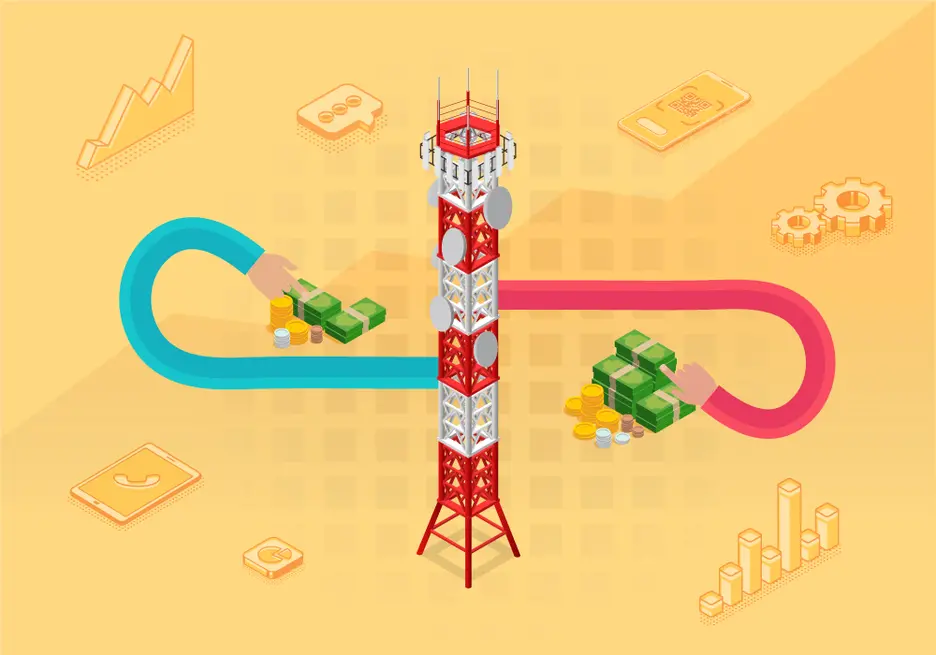How to finance mobile network operators in Latin America and the Caribbean?

Even though mobile network operators in Latin America and the Caribbean have made large investments in capital goods (or capex), it turns out that less than 20% of the inhabitants in the region use 4G mobile devices. Considering the expansion in coverage and the improvement in services, the figure is much lower than the 92% penetration of mobile phones that have more advanced economies such as the United States. The dilemma of adopting technologies such as 3G or 4G reveals two important obstacles: access and adoption.
If we talk about access, the reality in our region is that 10% of the population does not have access to these technologies and, of the percentage that does, 57% have not adopted them due to high cost or other factors. Together, both obstacles become a great barrier that prevents the narrowing of the digital gap.
In the past, mobile network operators offered subsidized phones to their customers against advance payments at a reduced price. From a financial point of view, this is not sustainable: especially after 2012 and 2013, operators around the world changed the focus of sales of mobile devices in cash for sales on credit. On one hand, they managed to improve profitability. But they also generated imbalance in their cash flow by having to pay phone manufacturers in cash, while waiting for the refund of their customers' final payment in an average period of 12 to 24 months.
How to boost the industry of mobile network operators?
If these operators want to continue expanding their sales, they must overcome three challenges:
- The balance and the pressures of cash flow, which they experience by having to pay phone manufacturers in less than 90 days, while waiting for the respective reimbursements of their end users in the course of 12-24 months.
- The difficulty of finding local financing for their credit sales programs, especially considering that selling phones is not part of the core business of mobile network operators.
- With the change in International Financial Reporting Standards (or IFRS), in effect since January 2018, mobile network operators can no longer recognize revenues from the sale of mobile devices. monthly form (against payments of the monthly installments of their respective clients).
This last variable is undoubtedly the most critical to solve within the mobile device sales equation, because before the new IFRS came into effect, mobile network operators were not forced to record the financial loss caused by the potential lack of payment of your customers at the time of sale. Now, on the other hand, they must recognize the revenue coming from the sales of mobile devices at the time of sale and the profit accrued.
Accounts receivable: Keys to finance the industry
Under these new rules of the game, mobile network operators find it difficult to continue offering credit devices at the rate they used to. How to change this situation? There are innovative financial structures that mitigate all the challenges described here.
Unlike traditional financing programs for the purchase of accounts receivable, in the financial structure IDB Invest offers, the risk is not related to the end users but to the mobile network operator. This type of operation is more attractive to other potential investors and financial institutions.
Our proposal is simple. It is not necessary to securitize the mobile network operator's assets, that is, sell bonds or securities in the open market based on guaranteed income streams to relieve pressures on the balance sheet. Although this is not new, securitization is a highly complex process, which requires rating agencies to examine the promissory notes. Also, attorneys’ fees are high.
Therefore, IDB Invest operations allow the purchasing of hundreds of accounts receivable from mobile network operators‒of mobile devices not included in the balance sheet‒and do not require the intervention of a rating agency. In addition, and unlike securitization‒which must be repeated every time a critical mass of accounts receivable is reached‒IDB Invest’s mechanism offers more flexibility, since many accounts receivable or few can be purchased at any given time.
With more mobile devices in the hands of more people and solidly financed, the profit is for everybody.■
See the note Reducing the Digital Divide through Smartphone Financing in Latin America and the Caribbean, for more information on the potential for impact of the purchase facilities for accounts receivable that we are implementing with mobile operators in the region.
LEARN HOW IDB INVEST CAN OFFER YOU SOLUTIONS HERE.
LIKE WHAT YOU JUST READ?
Subscribe to our mailing list to stay informed on the latest IDB Invest news, blog posts, upcoming events, and to learn more about specific areas of interest.
Subscribe



